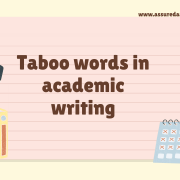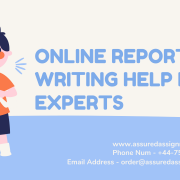Introduction
Human and social capital is assets which are available for business. Here the human capital presents individuals with specific skills, understanding about different subjects and social network refers to connection between different individuals who share common values of that society they inhabit and work together to make it function better. The idea of human capital was proposed by Gary Becker and Jacob Mince to explain the contribution of an individual’s personal values on their performance. It is the collective understanding and expertise of its workforce. Social capital describes relationships between co-workers and connections between individuals who belong to different strata of our society.
Relationship among decisional and professional capital, leadership and collaboration
The professional capital extends to social, human and decisional capital and it has a significant effect on collaboration and leadership as it is an asset for leadership in organisations. There is a connection between professional capital and development in an individual’s professional growth. Human capital grows with individuals becoming more experienced with time and work experience (Teresa and Montse, 2016). Social capital grows with increasing collaboration between different individuals and decisional capital can be interpreted through individual’s ability to make critical decisions, managing others while being in a leadership position in an organization.
Social capital
According to studies about social capital and leadership development, an organization’s productivity can be affected by social capital growth can be affected by leadership development. Social capital can give the business a competitive edge. Social capital can give desirable results and it is based on a network of individuals’ who are interconnected to one another. The individuals’ who work within an organization are responsible for an organization’s social capital. It is not decreased by utilizing instead of that it is decreased by not utilizing. Therefore, it is difficult for other organizations to view and copy social capital (Truijen et al. 2013). It is more important since its effects cannot be seen directly but has more usefulness in the organization. Social capital can help organizations to function smoothly by allowing the flow of information and assets.
Human capital
Human capital can have impacts on leadership, human resource and expertise selection within an organization. It includes an individual’s academic qualification, expertise and also includes personal experience. Though it is a new concept it explains organization’s requirement of acquiring human capital in order to increase their productivity and make them addition to their existing workforce (Darling-Hammond et al. 2017). It is an asset like any other which an organization deems valuable much like punctuality and allegiance. According to studies on human capital
Decisional Capital
Decisional capital refers to involvement in making any decision with efficiency in difficult situations. It takes time to develop decisional capital and specific strategy to build decisional capital. It must not be ignored since the sustainability of an organization is dependent on decisional capital because as people we are different from one another and our idea of handling a situation can be very different from one another. Coaching can help organizations in this process. It can help in building a structural framework where individuals can assist each other become more reflective about their actions (Birman et al. 2000). These social, human and decision capital are related to one another as human capital refers to individuals with specific skill sets and experience , social capital refers to their participation and design capital can refer to how these selected individuals deal with a particular situation efficiently.
Why focus on professional capital important for leaders in successful educational organizations?
Professional capital is important for leaders to become successful in the educational organization. Since academics are always changing, experienced leaders are required for staying updated is crucial for educational organizations. It is not measured directly by economic values and not everyone has a clear understanding about developing these personal capital which has a significant impact on educational organization’s growth, helping in building leadership roles among educators working within the organization (Yonker et al. 2015). Human capital which is part of professional capital is the aggregation of a worker’s talent pool and skills set. It is a reflection of educators’ understanding about their subject matter and their efficiency in managing learners. The decisional capital refers to educator’s decision making capabilities and their specific way of handling a situation, their capability as leader to monitor their teams as well. Social capital is significant in terms of how educators work in partnership with one another and build a work culture which is supportive in nature. It requires monetary investment and commitment to build social capital in educational organizations. Nowadays educators are being motivated to work in partnership with one another , inspire research based learning activities and imbibe each other’s qualities (Kools et al. 2016) Human capital development on the other hand means supporting educators’ own learning about different subjects. The main crucial factors in building human capital require time and educators are already spending a lot of time working with each other. Moreover building human capital requires specific changes in strategy to improve quality of education in educational organizations. The educational organization needs to invest on building its decisional capital as it can be transformative for them. Organization advancement is more likely if leadership supports this kind of development. The social capital draws on the fact that it is based on human capital. The educators working in partnership with one another effectively is related to increasing development of social capital. Human impacts mainly refer to the standard of educators who are teaching in an educational organization. It can be interpreted as inspiring and motivating learners. While hiring educators the administration needs to look for four essential qualities. These qualities are educators need to have an outlook to treat all students equally as far as their learning is concerned. Educators need to have skills regarding transferring instructions to learners, they need to be able to work with others collectively and finally educators need to be committed to the learning process. The leaders need to invest in professional capital because it will create new opportunities that are a part of the learning process (Watts et al. 2020). The higher authorities need to encourage research activities in the academic field and make policies based on these scientific findings. Educators can use social media to exchange new ideas and recommend them to one another to promote professional capital’s improvement. The investment into professional capital is a serious issue because its objective is to make learning more useful and accessible to every learner irrespective of their social and economic backgrounds. These investments can help the educators also to better their performances educational organization and fulfilling their leadership potentials and inspiring many others to follow on their path in future.
What do we know empirically about the impact of collaborative cultures (and human and social capital) to educational organizations?
The scientific data revealed different impacts about human and social capital cumulatively on educational organization’s culture. According to studies on social capital, academic fields have significant effects in terms of their social capital. The study further adds that social capital is divided into two different types such as family social capital and society social capital (Romeu et al. 2016). According to experts, social capital is the solution to a large number of issues including social problems existing in our society. But the experts are divided about the subject. While describing social capital two key factors are used by experts. First on are features of social structures and second are individuals who perform their activities through these structures. Experts believe that social capital is always changing and they are interested in its use rather than its definition. In the case of human capital, which is the culmination of an individual’s expertise and their understanding of different subjects, it is not easy to evaluate human capital. It is an amalgamation of an individual’s experience in their professional field as well as their formal schooling. There is no standard method available to evaluate human capital (Hairon et al. 2015). The alternative methods are used to evaluate human capital such as experience in being at the academic institutions in terms of years spent to learn different subjects. Human capital is measured on the basis of years an individual goes through in an academic institution and their investment on education. According to studies published on human capital and education is an area of research which holds a lot of interest for future analysis. Human capital is related to educators’ efficacy in teaching, investment in education and their knowledge about different topics as well. It does not just refer to intelligence but also includes a diverse group of skills an individual can possess. Social capital has positive impacts in educational organizations; it can lead to high scores on tests and evaluation (Paterson et al. 2017). It can lead to more graduates and fewer dropouts. Social impact has positive impact on college admissions as well.
What evidence-informed strategies are effective for leaders to build collaborative cultures in educational organization
The educators who perform in organizations with strong collaborative cultures act differently than others who are dependent on authorities to make suitable circumstances for them to perform (Drago-Severson et al. 2018). In collaborative work environment educators works with one another by leading and supporting learners to achieve their desirable results. Some educational organisations are no longer interested in collaboration culture as they see it as grandeur rather than necessity. It is the responsibility of educators to work with one another and continue in the path of improvement in terms of learning and teaching. It can speed up the originations’ intellectual improvements. Since educators playing leadership roles have so much scope of improvement in terms of being more efficient, promoting creativity and making a positive impact, skepticism can become a significant hurdle to reach this level of improvement (Hargreaves et al. 2013). The leader can promote collaboration and make it part of an educational organization in more ways than one. The leaders can set up certain goals to be achieved by the whole group; it is always useful to set up these goals before starting a task. The leader needs to keep the grouping to a certain size to make sure all individuals are participating on an equal basis. The individuals who are forming part of these groups need to make sure interaction with one another efficiently and rules must be flexible for collaboration to work efficiently. The individuals need to communicate with one another since it is the key factor for success in group structure. The educational organization can build collaborative work culture to increase learner’s successful outcomes. The collaborative cultures can help build new scopes of building leadership roles; it can also prepare new and relevant opportunities for participants (Vangrieken et al. 2016). The collaborative cultures need to support synchronizing team members’ efforts as well as commemorate each other’s victories.
Conclusion
The professional capital can have a significant impact on educational organizations which can impact its long term goal as well. The human capital which collective of intellect, experience and skills set of individuals working for that educational organization. The social capital which is in interconnection between individuals such as co-workers who are a part of the organization. Finally the decision capitol which dictates who individuals handle specific situations in completely different ways. In order to function smoothly the educational organizations need to apply a collaborative culture in which educators can work and support each other and it can be beneficial for the organization as well. It can lead to transformative changes in educational organization and lead to betterment. The organizations can promote leadership activities as a part of collaborative work culture where educators can learn from each other and as well as students who are also a vital part of the organization. It can create more opportunities for teaching and learning for future leadership and students within an organization.
References
Darling-Hammond, Linda, Hyler, Maria E & Gardner, Madelyn 2017, ‘Effective teacher professional development’, Learning Policy Institute
Drago-Severson, Ellie & Blum-DeStefano, Jessica 2018, ‘Building a developmental culture of feedback’, Journal of Professional Capital and Community, vol. 3, no. 2, pp. 62-78
Hargreaves, Andrew & Fullan, Michael 2013, ‘The power of professional capital: with an investment in collaboration, teachers become nation builders’, The journal of staff development, vol. 34, no. 3, pp. 36-39
Kools, Marco & Stoll, Louise 2016, ‘What makes a school a learning organisation?’, OECD education working papers, vol. 137, pp. 1,3,6-7,9-88
Romeu, Teresa & Guitert, Montse 2016, ‘Teacher collaboration network in higher education: reflective visions from praxis’, Innovations in education and teaching international, vol. 53, no. 6, pp. 592-604
Truijen, K. J. P, Sleegers, P. J. C, Meelissen, M. R. M & Nieuwenhuis, A. F. M 2013, ‘What makes teacher teams in a vocational education context effective?’, The journal of workplace learning, vol. 25, no. 1, pp. 58-73
Yonker, Robert D. & Hopkins, Margaret M. 2015, ‘Managing conflict with emotional intelligence: abilities that make a difference’, The journal of management development, vol. 34, no. 2, pp. 226-244











